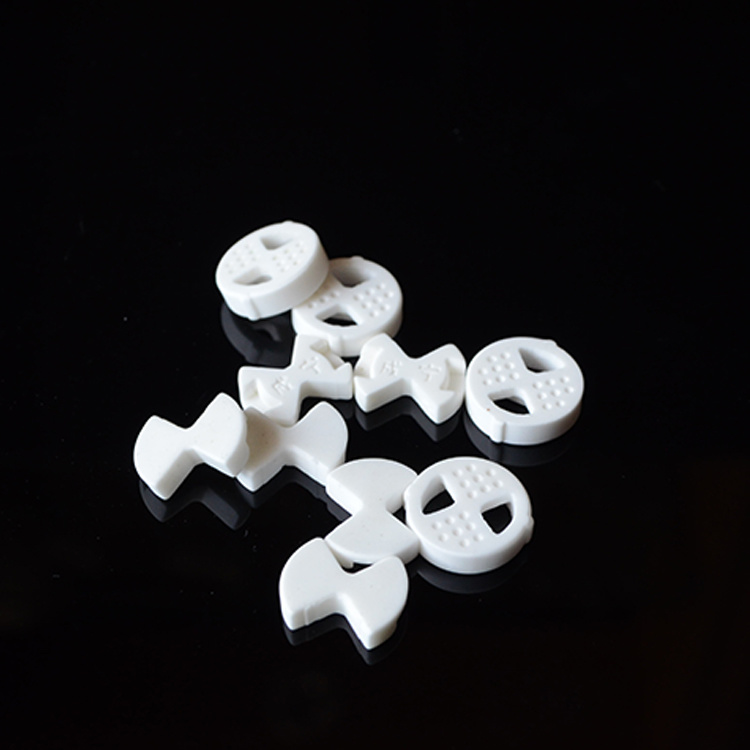
The Importance of Lab Crucibles in Gold Assaying: Ensuring Accurate and Reliable Results
Time:
2023-09-08 09:21
Source:
Table of Contents:
1. Introduction: Understanding the Role of Lab Crucibles in Gold Assaying
2. Why Lab Crucibles Matter in Gold Assaying
3. The Different Types of Lab Crucibles Used in Gold Assaying
4. Crucible Materials: Choosing the Right Option for Gold Assaying
5. Crucible Preparation: Crucial Steps for Effective Gold Assaying
6. The Importance of Crucible Cleaning and Maintenance
7. Crucible Handling and Safety Measures in Gold Assaying
8. Frequently Asked Questions (FAQs) about Lab Crucibles in Gold Assaying
9. Conclusion: Enhancing Accuracy and Reliability with Lab Crucibles
1. Introduction: Understanding the Role of Lab Crucibles in Gold Assaying
In the field of gold assaying, lab crucibles play a vital role in obtaining accurate and reliable results. These small, heat-resistant containers are designed specifically for high-temperature applications, making them essential tools in the analysis of precious metals. Lab crucibles are carefully selected and prepared to ensure they provide an ideal environment for the gold assaying process.
2. Why Lab Crucibles Matter in Gold Assaying
Lab crucibles are specifically engineered to withstand the extreme temperatures required for gold assaying. They are designed to prevent any contamination or interaction with the molten metal during the analysis process. Lab crucibles also play a crucial role in ensuring consistent heat distribution, enabling accurate measurements and precise determination of the gold content in a sample.
3. The Different Types of Lab Crucibles Used in Gold Assaying
There are various types of lab crucibles used in gold assaying, each with its own unique properties and advantages. Some commonly used crucible types include clay/graphite crucibles, ceramic crucibles, and silica crucibles. These crucibles vary in terms of their material composition, durability, and resistance to high temperatures, allowing for different applications based on specific requirements.
4. Crucible Materials: Choosing the Right Option for Gold Assaying
When selecting a lab crucible for gold assaying, it is essential to consider the specific requirements of the analysis process. Clay/graphite crucibles, for example, are often chosen for their excellent thermal shock resistance and durability. Ceramic crucibles offer high resistance to chemical corrosion, making them suitable for certain gold assaying techniques. Silica crucibles are preferred for their high purity and low contamination potential.
5. Crucible Preparation: Crucial Steps for Effective Gold Assaying
To ensure accurate and reliable gold assaying results, proper crucible preparation is crucial. This involves cleaning the crucible to remove any impurities that could impact the analysis. Additionally, preheating the crucible helps eliminate any residual moisture, preventing unwanted reactions during the high-temperature process. Proper preparation ensures the crucible's integrity and minimizes the risk of contamination, enhancing the accuracy of gold assaying.
6. The Importance of Crucible Cleaning and Maintenance
Regular cleaning and maintenance of lab crucibles are essential for maintaining their integrity and ensuring consistent results in gold assaying. Proper cleaning removes any residual material that may affect subsequent analyses. It is important to follow specific cleaning procedures recommended by the crucible manufacturer to avoid damaging the crucible or introducing contaminants.
7. Crucible Handling and Safety Measures in Gold Assaying
Proper handling of lab crucibles is crucial to ensure both operator safety and accurate results. When working with high-temperature materials, safety measures must be followed, including the use of personal protective equipment (PPE) such as heat-resistant gloves and goggles. Careful handling minimizes the risk of crucible breakage and potential exposure to hazardous materials.
8. Frequently Asked Questions (FAQs) about Lab Crucibles in Gold Assaying
Q1: Can lab crucibles be reused?
A1: Yes, lab crucibles can often be reused, provided they are properly cleaned and inspected for any signs of damage or contamination.
Q2: What is the ideal temperature range for gold assaying in lab crucibles?
A2: The ideal temperature range for gold assaying can vary depending on the specific assay method used. It is essential to follow the recommended temperature guidelines for accurate results.
Q3: How can I prevent crucible breakage during the gold assaying process?
A3: Crucible breakage can be prevented by ensuring proper handling techniques, avoiding sudden temperature changes, and using crucibles suitable for high-temperature applications.
Q4: Are there any safety precautions to consider when working with lab crucibles?
A4: Yes, it is important to follow safety protocols, including wearing appropriate PPE, working in a well-ventilated area, and using caution when handling hot crucibles.
Q5: Can the choice of crucible affect the accuracy of gold assaying results?
A5: Yes, the choice of crucible material and quality can impact the accuracy of gold assaying results. It is crucial to select a crucible that is compatible with the specific assay method and sample being analyzed.
9. Conclusion: Enhancing Accuracy and Reliability with Lab Crucibles
Lab crucibles play a crucial role in gold assaying, ensuring accurate and reliable results in the analysis of precious metals. By carefully selecting the appropriate crucible, preparing it correctly, and adhering to proper handling and cleaning procedures, the integrity of the assaying process is maintained. Lab crucibles contribute significantly to the accuracy and reliability of gold assaying, making them indispensable tools for any laboratory engaged in precious metal analysis.
1. Introduction: Understanding the Role of Lab Crucibles in Gold Assaying
2. Why Lab Crucibles Matter in Gold Assaying
3. The Different Types of Lab Crucibles Used in Gold Assaying
4. Crucible Materials: Choosing the Right Option for Gold Assaying
5. Crucible Preparation: Crucial Steps for Effective Gold Assaying
6. The Importance of Crucible Cleaning and Maintenance
7. Crucible Handling and Safety Measures in Gold Assaying
8. Frequently Asked Questions (FAQs) about Lab Crucibles in Gold Assaying
9. Conclusion: Enhancing Accuracy and Reliability with Lab Crucibles
1. Introduction: Understanding the Role of Lab Crucibles in Gold Assaying
In the field of gold assaying, lab crucibles play a vital role in obtaining accurate and reliable results. These small, heat-resistant containers are designed specifically for high-temperature applications, making them essential tools in the analysis of precious metals. Lab crucibles are carefully selected and prepared to ensure they provide an ideal environment for the gold assaying process.
2. Why Lab Crucibles Matter in Gold Assaying
Lab crucibles are specifically engineered to withstand the extreme temperatures required for gold assaying. They are designed to prevent any contamination or interaction with the molten metal during the analysis process. Lab crucibles also play a crucial role in ensuring consistent heat distribution, enabling accurate measurements and precise determination of the gold content in a sample.
3. The Different Types of Lab Crucibles Used in Gold Assaying
There are various types of lab crucibles used in gold assaying, each with its own unique properties and advantages. Some commonly used crucible types include clay/graphite crucibles, ceramic crucibles, and silica crucibles. These crucibles vary in terms of their material composition, durability, and resistance to high temperatures, allowing for different applications based on specific requirements.
4. Crucible Materials: Choosing the Right Option for Gold Assaying
When selecting a lab crucible for gold assaying, it is essential to consider the specific requirements of the analysis process. Clay/graphite crucibles, for example, are often chosen for their excellent thermal shock resistance and durability. Ceramic crucibles offer high resistance to chemical corrosion, making them suitable for certain gold assaying techniques. Silica crucibles are preferred for their high purity and low contamination potential.
5. Crucible Preparation: Crucial Steps for Effective Gold Assaying
To ensure accurate and reliable gold assaying results, proper crucible preparation is crucial. This involves cleaning the crucible to remove any impurities that could impact the analysis. Additionally, preheating the crucible helps eliminate any residual moisture, preventing unwanted reactions during the high-temperature process. Proper preparation ensures the crucible's integrity and minimizes the risk of contamination, enhancing the accuracy of gold assaying.
6. The Importance of Crucible Cleaning and Maintenance
Regular cleaning and maintenance of lab crucibles are essential for maintaining their integrity and ensuring consistent results in gold assaying. Proper cleaning removes any residual material that may affect subsequent analyses. It is important to follow specific cleaning procedures recommended by the crucible manufacturer to avoid damaging the crucible or introducing contaminants.
7. Crucible Handling and Safety Measures in Gold Assaying
Proper handling of lab crucibles is crucial to ensure both operator safety and accurate results. When working with high-temperature materials, safety measures must be followed, including the use of personal protective equipment (PPE) such as heat-resistant gloves and goggles. Careful handling minimizes the risk of crucible breakage and potential exposure to hazardous materials.
8. Frequently Asked Questions (FAQs) about Lab Crucibles in Gold Assaying
Q1: Can lab crucibles be reused?
A1: Yes, lab crucibles can often be reused, provided they are properly cleaned and inspected for any signs of damage or contamination.
Q2: What is the ideal temperature range for gold assaying in lab crucibles?
A2: The ideal temperature range for gold assaying can vary depending on the specific assay method used. It is essential to follow the recommended temperature guidelines for accurate results.
Q3: How can I prevent crucible breakage during the gold assaying process?
A3: Crucible breakage can be prevented by ensuring proper handling techniques, avoiding sudden temperature changes, and using crucibles suitable for high-temperature applications.
Q4: Are there any safety precautions to consider when working with lab crucibles?
A4: Yes, it is important to follow safety protocols, including wearing appropriate PPE, working in a well-ventilated area, and using caution when handling hot crucibles.
Q5: Can the choice of crucible affect the accuracy of gold assaying results?
A5: Yes, the choice of crucible material and quality can impact the accuracy of gold assaying results. It is crucial to select a crucible that is compatible with the specific assay method and sample being analyzed.
9. Conclusion: Enhancing Accuracy and Reliability with Lab Crucibles
Lab crucibles play a crucial role in gold assaying, ensuring accurate and reliable results in the analysis of precious metals. By carefully selecting the appropriate crucible, preparing it correctly, and adhering to proper handling and cleaning procedures, the integrity of the assaying process is maintained. Lab crucibles contribute significantly to the accuracy and reliability of gold assaying, making them indispensable tools for any laboratory engaged in precious metal analysis.
lab crucible for gold assaying

